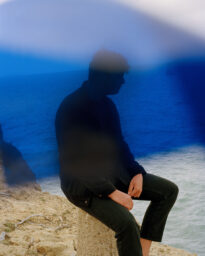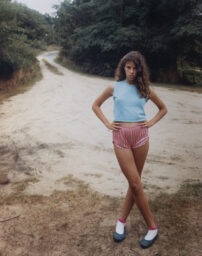All images from Tim Davis: I’m Looking Through You (Aperture, 2021)
Courtesy the artist
Glamour and grammar are the same word. This is not a clever platitude. The two are etymologically indistinguishable. How you put language together, how you articulate, is how you cast a spell. Glamour is a veil; a new surface that beckons and keeps you engaged. Gramarye, in Middle English, meant, simply, “magic.” The camera is a machine that can see only surfaces. The world casts its spell, and the camera gobbles up its glamour, uncritically, with pure certainty, assuming there is nothing underneath. For photographers, depth is metaphysical. You can try to see inside a subject, but all you are really seeing are the registrations of the inner being on the surface. Edward Weston’s 1930 portrait bust of José Clemente Orozco—the greatest example of how close a photograph can get to describing the inner being life of a person— in no way portrays the inner life of a person. It is a man’s haunted, vivid, resolute face, but the haunting comes from the skin, not the soul. It is articulate as a picture can be about the complexity of the human condition, a good candidate to broadcast out to aliens about what we, as a species are made of, are capable of, but the spell it casts is the glow off glasses and chin onto Weston’s silver film, and the spell is glamorous and profound. Before the Big Bang, all the atoms in the universe were collapsed into one point. There were no surfaces. Since then, there are more and more, and the camera is among the most powerful tools we have to explore them.
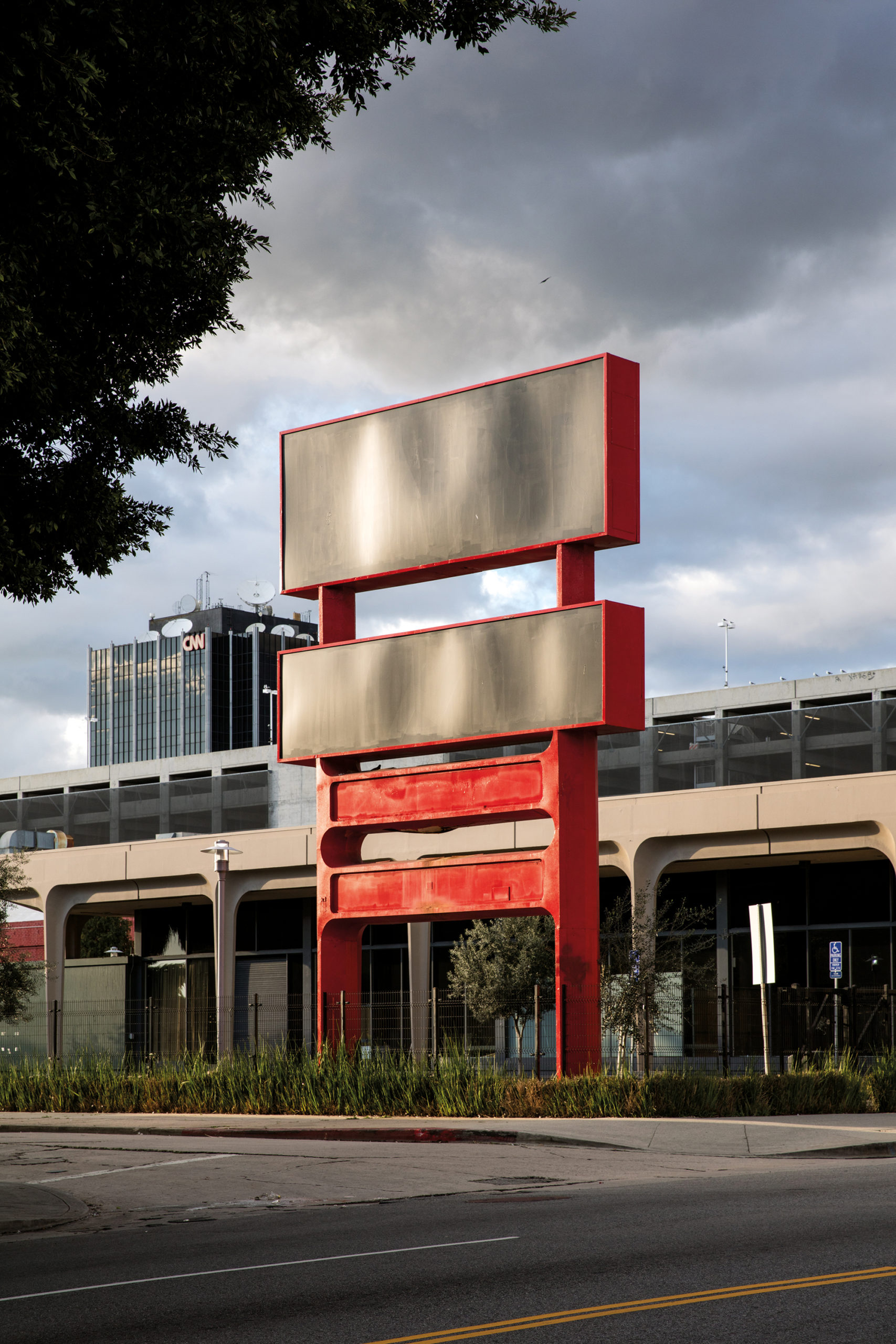
I had a girlfriend whose grandmother was like Katharine Hepburn. She’d been a model in the ’50s and if you opened an old Life magazine she’d be in it, draped in chiffon. She was glowy and glamorous, throwing the windows open on a chilly day and inhaling. On one languorous afternoon drive, she noticed how much I can’t help remarking on everything I see, and started calling me “Mister Hey Look at This! Hey Look at That!” I felt flirty enough with my girlfriend’s glamorous grandmother that the remark (on my remarks) smarted a bit, but I knew she was right. A light went on like the first shot of the first trailer in a dark movie theater: my biopic a jumpy, burbling time-lapse of “Hey, Look at This”es and “Hey, Look at That”s.
So imagine you’re a visual kid who can’t stop remarking, and on a divorce consolation trip to Disney World you get a Mickey Mouse camera. Turns out this camera loves everything you love. It sees what you see and feels what you feel. Your camera’s a great listener. You can tell your camera pretty much anything. As long as there’s enough light on, it nods and understands. It hangs around your neck and holds your hand. It loves to do what you love to do. If you feel like skipping school and just walking down the train tracks all day, this camera will want to come. It’s game. It’s on your side. It takes some time to learn to press the buttons it likes, but you want to please your camera so you do. You listen back. You know each other. You’re always together, strutting through town, in cahoots or in love, or all of the above. Eventually you to go into a dark room and pour out your insides.


I’d been working on a project called Sunset Strips, pictures of strip malls at sunset, made from an elevated perspective. Long, ozone rich days were spent in the future fossil layers they’ll call the “Bigboxoscene,” my rented sedan piled with coffee cups and Combos, scouting for hillocks, mesas, and off-ramps just east of This Plaza, That Center, hoping to climb up high enough to watch the sun go down on JoAnn Fabrics. When Sunset Strips work, they work well. They’re a cocktail of sincerity and irony, a cordial of bad urban planning and pure celestial revolution. They have an unusual color palette, acidic and shimmery like gasoline, from the lot lights below and the fire in the sky. They take you to a familiar place and pour gas on it, and isn’t it pretty watching it burn? But the sunset isn’t always in the west. Sometimes there’s no sunset at all. The damn star just crosses the horizon with no fanfare, no farewell fire, no pink. Many days I made zero pictures. Lots of nights I went to bed in a damnably mediocre hotel unable to really remember that first camera love. My wife, my real life love, would call me on the phone and say, “You need to do something that will make you happy.” So, like some Okie fleeing a photographic Dust Bowl, I went to California.
I left a lot behind: the view camera, the film, the consumable project whose artist’s statement writes itself. But I got out of there. I flew through the night and arrived on Christmas. For someone from Upstate New York, Christmas in Los Angeles is like an old man waking up in the body of Bruce Lee: salvation where usually there is only suffering. Like a propaganda film shot in a concentration camp, Christmas is a time for enforced cheer, and here, walking with my Jessica Rabbit/Dorothy Parker sister-in-law in the eucalyptus-scented Los Feliz hills, no force is necessary. It turns out living in paradise feels good. All the forest fires, mudslides, drought conditions, inequality tsunamis, body-image issue typhoons, plagues of uncanny ambition, can’t stop your body feeling good when you’re in the air there. The dark hearted Calvinists driving the Thomas E. Dewey Thruway and Mass Pike are certain you can’t enjoy the good times without enduring the bad. Spring, they say, is only spring because we’ve gotten through winter. Those people are lying. Don’t listen to them. Feeling good feels good all the time.
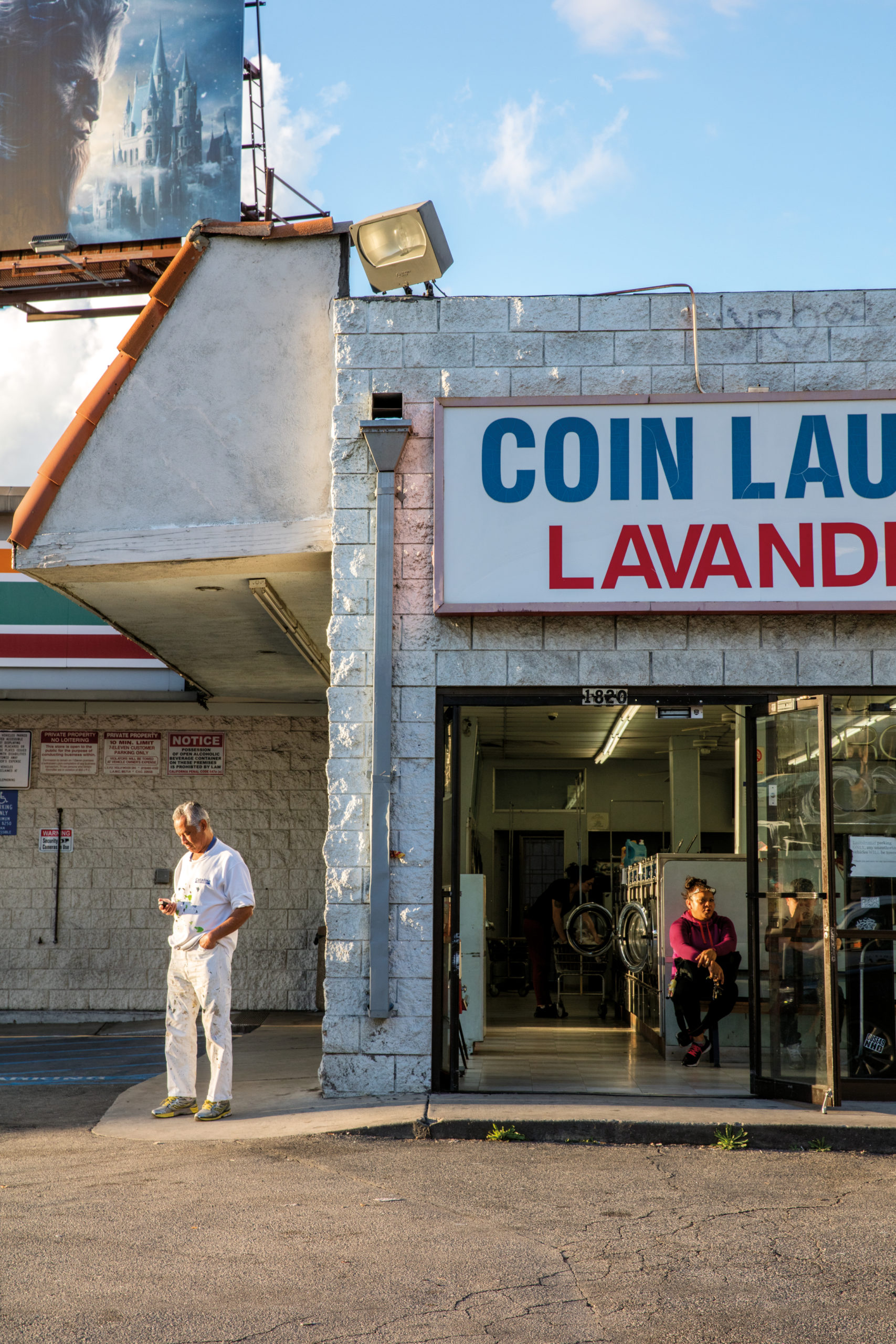
Right now, I feel like a panda in a bamboo forest. It’s leafy and spindly sliding along these nautilus spiraled Drives, Ways, Places. The houses wobble up cliffs like Borneo beehunters on heavenly stilts. Most are mere real estate, and have been mercilessly redone. Some are wild and unattended, and you expect Joni Mitchell to amble out the door with a dulcimer. My sister-in-law lives in a 1987 gay-porn set with mirrored walls and penis-themed scrollwork. We stop in front of a tacit ranch house that wouldn’t look out of place on any Oak Street in America. The sense of ceramic cherub and bubbling birdbath tells you it’s inhabited by the elderly: I’m guessing the guy who wrote the Andy Griffith theme song and his lover, who whistled it. This one has big sliding glass front and back doors. The house is a frame for a distant view, blocked only by décor: an endtable and a chandelier. You see the house, you see inside the house, and you see beyond it, as Glendale and a bit of Burbank metastasize toward the San Gabriels.
A thing can be interesting, but a picture of a thing isn’t necessarily more interesting than the original thing. Looking through this house makes it mean more, and the more it means, the more photographable it becomes. I raise my camera to my eye without thought, like a sea anemone sensing a clownfish coming. I know there is a picture here. It is waving its glamour and meaning at me, braying, “Hey, look at this!” Paradise. As Adam named the animals, my sister- in-law was born to give things monikers. She sees me looking through this house, deeply, unashamedly in love with photography again, and, grinning conspiratorially, whispers, “I’m looking through you!” I raise up the camera in my hand and say it too.
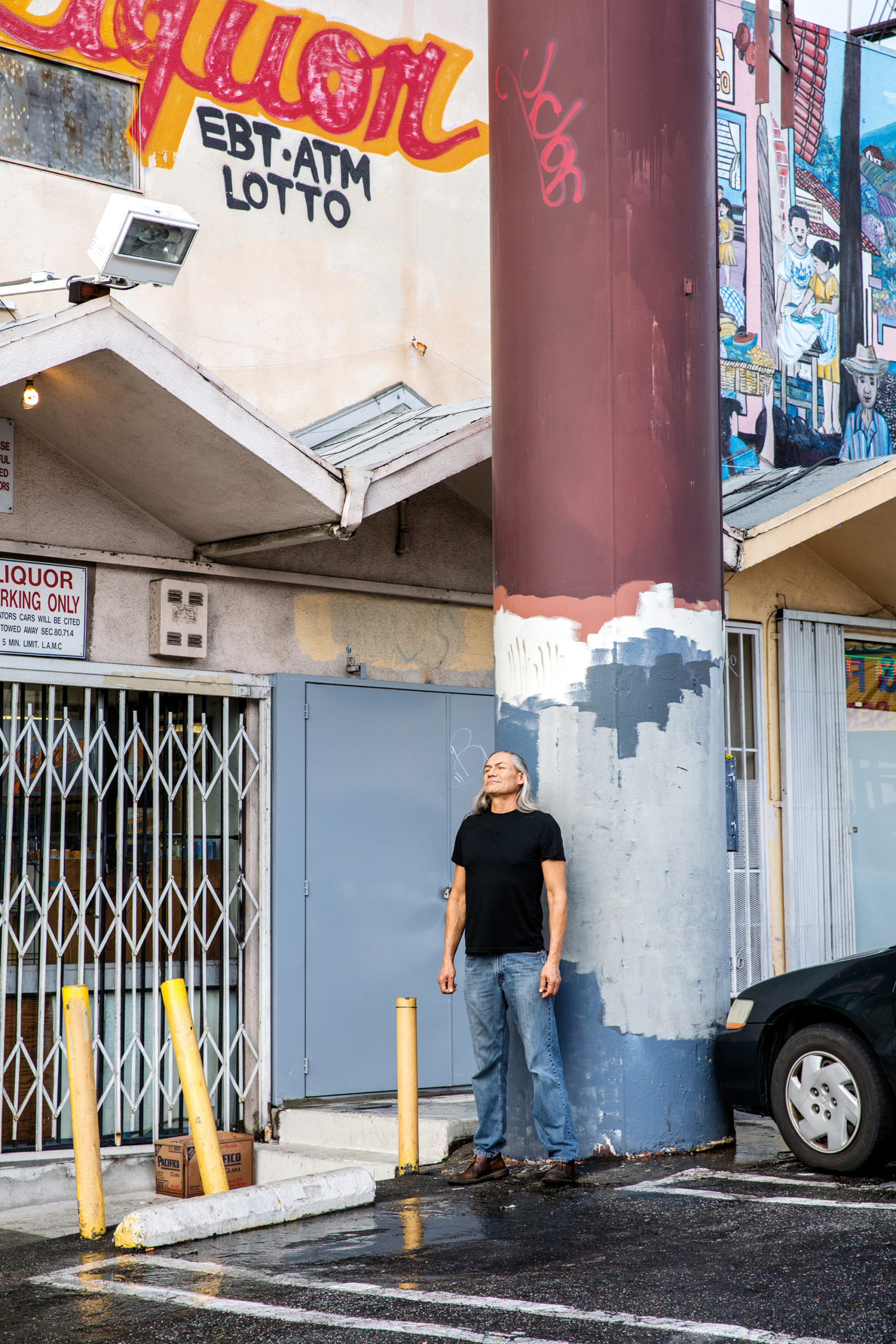
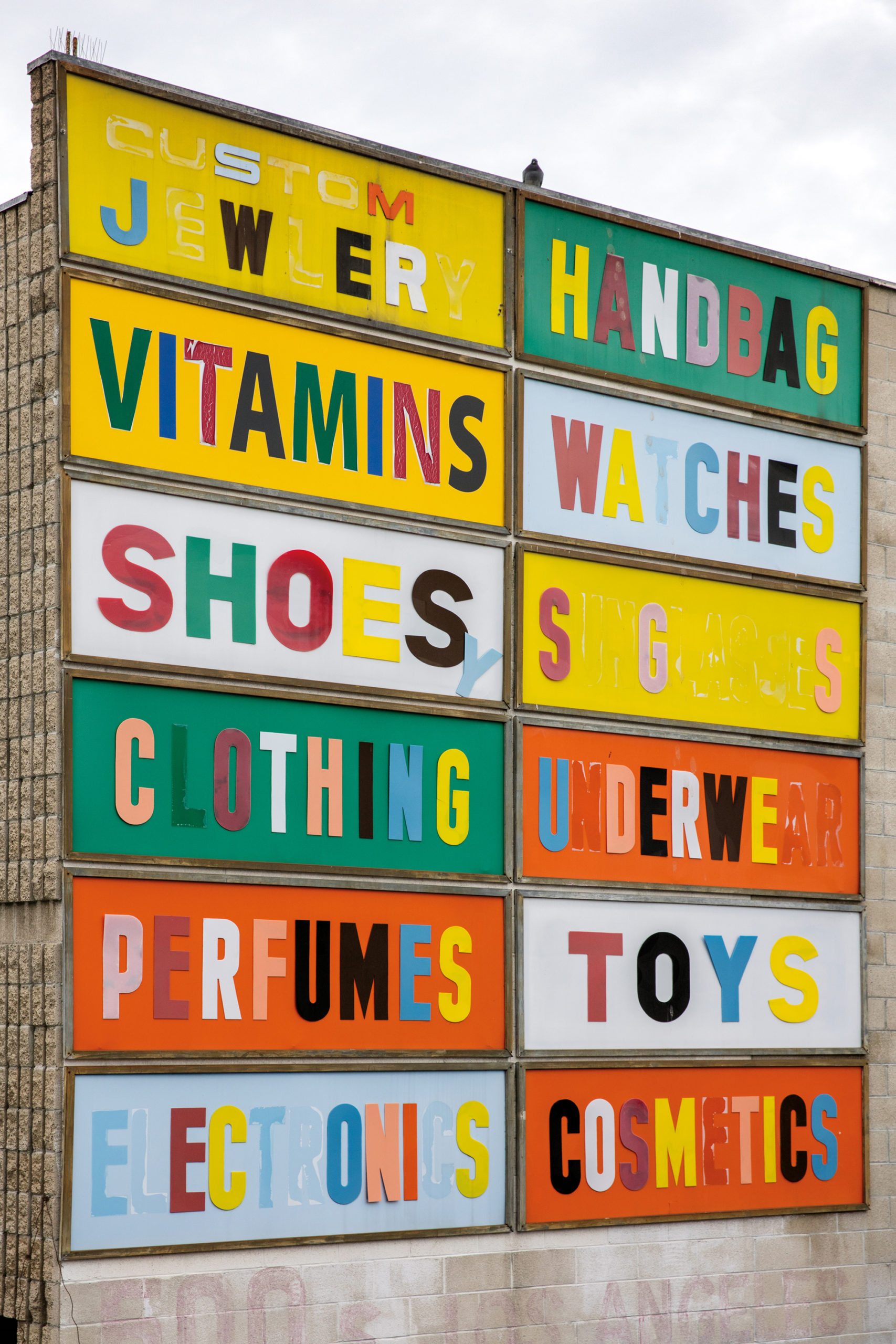
As I walk under the city’s Dantean underpasses that connect its constellated villages, and across wide, sparkling sidewalks, past each house with its own little imagined ecosystem, I’m having a hard time making these pictures feel realistic. Maybe it’s using a hand camera: squinting dollops of dimension down into that tiny one- eyed viewfinder tightens and fractures the world, coal to crystal, ship in a bottle. If you force a Caravaggio through a keyhole you get a Giotto out the other side. But the more I work, the more medieval I become. Realism isn’t for lovers. Who needs realism here, where no one’s interested? The big break is just around the corner. Every deal is about to go down. It’s 70 degrees and sunny. Everyone’s a star or an icon.
The vertical frame keeps insisting it’s the only way to paint these icons. It cuts the fabric of reality with more friction and rip than the horizontal. It doesn’t look like looking. And the more I use it, the less concerned I am about how my pictures “represent” anything or anyone. Instead, I pray to Saint Veronica, who reached toward Christ’s suffering and wound up with his face on her handkerchief. This face is not a realistic face. Look at Hans Memling’s Veronica. She’s holding a concert T-shirt … from the 1 CE Golgotha tour! Photographs are revelations, not representations. They don’t stand for anything. They are autonomous experiences alongside, conjoined with, minted from, real experiences. Photographs are forgeries. When I click the shutter, I am Veronica, stretching out for a handful of the sacred sweat, but never expecting to tell the story of my savior. The medieval photographer doesn’t represent; she carves what she feels. Perspective is off, space collapsed. People aren’t identities, they’re saints. Realist Caravaggio used prostitutes to pose as virgins. In a medieval icon, the saint is in the painting itself, infused in the poplar panel: not a description, an assertion. “I’m looking through you” means you aren’t you. You are a stiff and awkward pose, eyes rolling to the sky, housing potential miracles. You are holding these assertions in your hands, looking through them. The “you” I am looking through is the camera itself, magical carver of worlds, bringer of gramarye and glamour. Maybe this book should’ve been called Lives of the Saints.
This essay and images were originally published in I’m Looking Through You (Aperture, 2021).


























